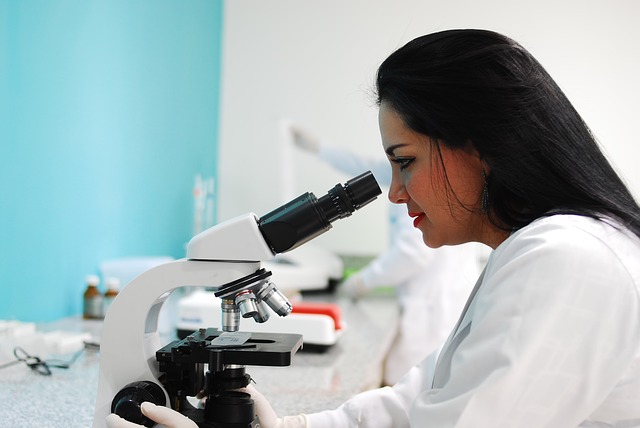The potential impact of stem cell technology on medical practice is vast. Stem cell research will ensure future therapies and better understand disease mechanisms. Although stem cell treatment costs can be challenging, as with any other medical procedure, the benefits may justify the cost. Stem cell therapy has been adopted to treat various medical conditions.
However, stem cell treatment has faced criticism from many who see it as a threat. Major scientific, legal, ethical, and philosophical discussions have been held surrounding using stem cells in practice, and conclusions that prove beneficial to all have been made. This article will take you through what stem cells are, the history of stem cell therapy, and whether stem cell treatment is worth trying.
Brief History of Stem Cells

Ernest McCulloch and James Till were the first scientists to define the key properties of a stem cell in clear terms. In the 1960s, they discovered the hematopoietic stem cell (HSC), a blood-forming stem cell. A stem cell, by definition, is a cell capable of both self-renewal (ability to divide into daughter stem cells) and differentiation into specialized mature cell types.
In 1981, Martin Evans and Matt Kauffman emerged as the first scientists to identify, isolate, and successfully culture embryonic stem cells using mouse blastocysts. This discovery led to the creation of murine genetic models, which are mice with artificially altered genes, to study the function of the genes in disease.
This breakthrough was possible because scientists were able to modify the genome of the embryonic cells of a mouse and then inject those modified cells into the mouse blastocysts. Ultimately, every cell in the mouse’s body will modify the interest expressed after maturity. After this breakthrough, James Thomson and his collaborators isolated embryonic cells from human blastocysts, making it possible to develop cell types for research, organ transplantation, and testing new therapeutics.
Types of Stem Cells
In this section, we’ll be considering four types of stem cells, which are:
- Embryonic stem (ES) cells
- Mesenchymal stem (MS) cells
- Tissue-specific stem cells (adult stem cells)
- Induced pluripotent stem (IP) cells
Embryonic stem cells
Embryonic stem cells (ESCs) isolated from the blastocyst are pluripotent, which means they can divide to give rise to any cell type found in the adult body. Still, they cannot give rise to the placenta and umbilical cord.
These cells are highly valuable because they serve as a renewable research tool for looking into human development and disease and testing new therapeutics.
Mesenchymal stem cells
Mesenchymal stem cells (MSCs) are defined as stromal cells with the ability to self-renew and give rise to a variety of cells, but not all types of cells. They are called stromal cells because they can be gotten from a number of tissues, such as the umbilical cord, endometrium, bone marrow, fat tissue, and so on.
Mesenchymal stem cells have immunomodulatory properties, promoting their use in tissue regeneration for cartilage, bone, tendon, muscle, and neuronal cells. It has also been used for gene therapy and treating conditions such as autoimmune pancreatitis, psoriasis, rheumatoid arthritis, sepsis, vasculitis, pulmonary disease, and multiple sclerosis (MS).
Tissue-specific stem cells
Tissue-specific stem cells (TSCs) are also called adult stem cells or somatic stem cells. They can give rise to different cell types with the function of the particular organ or tissue in which they live.
For example, hematopoietic stem cells (HSCs) are blood-forming stem cells giving rise to different types of blood cells such as white blood cells, platelets, and red blood cells. However, they can’t generate muscle, heart, brain cells, or any other cell aside from blood cells.
Tissue-specific stem cells function to maintain the health of tissues and organs, fight inflammation, and repair damaged cells. Studies on adult stem cells have increased knowledge about how aging occurs and what goes on in the body during an illness.
Induced pluripotent stem cells
Induced pluripotent stem cells (iPS) are modified stem cells created by converting adult stem cells into embryonic-like stem cells. Like their prototype, iPS cells can give rise to all the cell types in the body. However, they are completely different from the typical embryonic stem cells.
IPS cells are important in research to help scientists learn more about normal human development, the onset of various diseases, and their progression patterns. They are also helpful in testing the quality and efficacy of new drugs.
Is It Worth Trying Stem Cell Therapy?
Whether you’re looking into leukemia stem cell treatment, stem cell treatment for MS, or some other disease, stem cell therapy has been adopted to treat a variety of medical conditions. The benefits of each type of stem cell have been stated above, but here is a list of the various benefits that stem cell therapy provides:
- Stem cells have promoted the understanding of diseases, their progression, and how to cure them.
- Through stem cell therapy, which is a kind of regenerative medicine, there is a cure or relief for several chronic health conditions.
- In some conditions, stem cells can be administered to relieve chronic pain without getting prescription pills or having surgery.
- Stem cells are used to test drugs for quality and efficacy before being administered to live animals and humans.
The risks associated with stem cell therapy are:
- Cell rejection by the host’s body is a concern, but this becomes less if the patient’s own cells are used in the procedure.
- Concerns regarding the safety and nontoxic engraftment, transplantation, and long-term survival of stem cells.
The healing properties of stem cells make it possible to treat or manage some medical conditions with the low risk or absence of side effects and adverse reactions. Alongside this, many stem cell trials are still ongoing to confirm their efficacy and develop guidelines.
Where To Get Qualified Stem Cell Treatment?
Stem cell therapy is still not approved in some countries, so you need to know if this method is legal in the country you are going to be treated. To get a qualified stem cell treatment, you need to visit an accredited and licensed center. You can check out this registered Swiss Medica stem cells clinic.
Ensure you go through the necessary details like pricing, patient reviews, facilities in the center, and the expertise of the medical professionals. The medical team should have sufficient experience in stem cell therapy, as that means they’re experienced in administering stem cell treatments as specialists in regenerative medicine.
Through time, Stem cell therapy has been used to treat several medical conditions. The benefits are numerous. And the ‘threats,’ which are the risks associated with it, have been minimized due to much research. So yes, it’s worth going for stem cell treatment if you have a medical condition that can be treated with stem cell therapy. Do you think there is any threat related to stem cell treatment?



